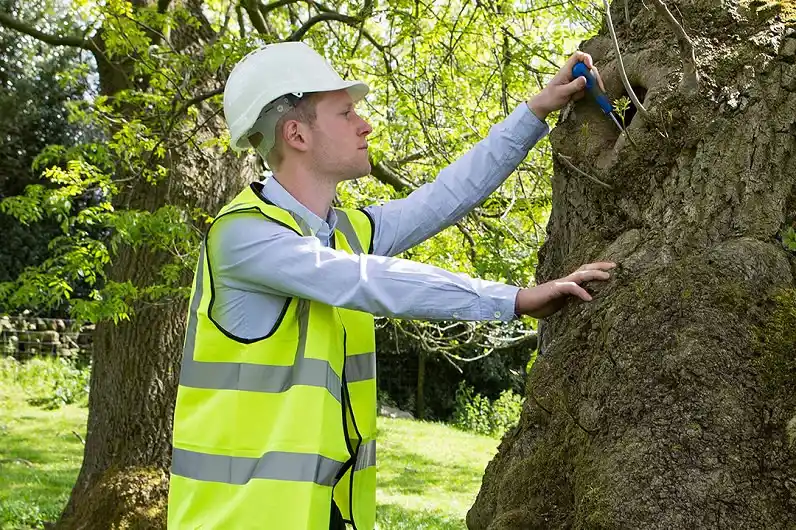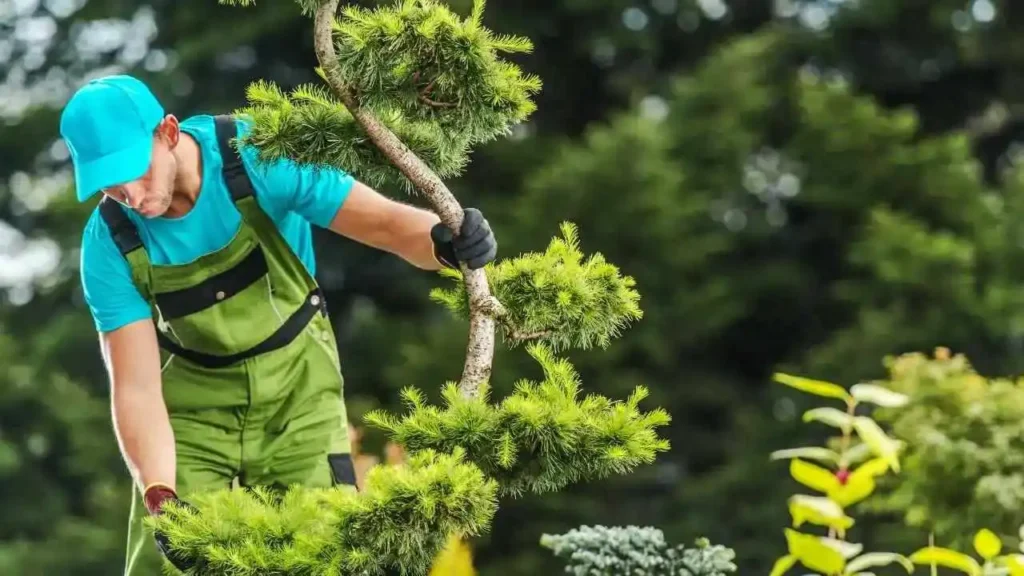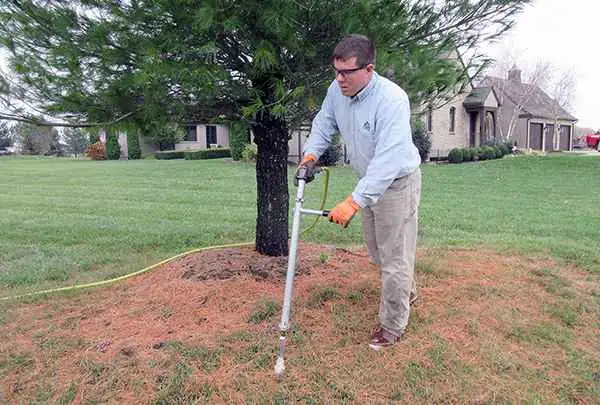
Essential Tree Maintenance Tasks for Homeowners
Trees offer great value to your properties. They offer shade, beauty, privacy, and can even boost your home’s resale value. However, to keep them healthy and safe, proactive maintenance is key. Here’s a breakdown of essential tree maintenance services for homeowners can handle to ensure their trees thrive for years to come.
Tree Inspection: The Foundation of Good Tree Care

Before performing any tasks, conduct a thorough tree inspection. Look for:
- Dead or Broken Branches: These pose safety hazards and should be removed.
- Signs of Disease: Discolored leaves, fungus, or unusual growths might indicate tree illness.
- Insect Infestations: Look for chewed leaves, holes in the bark, or insects themselves.
- Structural Issues: Leaning trunks, cracks in branches, or exposed roots may signal instability.
If you notice anything concerning, it’s best to consult a certified arborist for expert tree assessment and treatment.
Tree Pruning: Shaping Your Trees for Health and Safety

- Timing: Prune deciduous trees (those that lose leaves) in late winter or early spring when they’re dormant. Evergreen trees can generally be pruned year-round, though it’s best to avoid pruning during their periods of active growth.
- Tools: Use sharp pruning shears for smaller branches and a pruning saw for thicker ones. Disinfect tools between trees to prevent spreading disease.
- How to Prune: Focus on removing dead, diseased, or crossing branches. Cut branches back to a branch collar (the swollen area where the branch meets the trunk). Avoid leaving stubs. Don’t remove more than 25% of the tree’s living foliage in a single season.
Tree Mulching: Nourishing Your Trees’ Roots
- Benefits: Mulch retains soil moisture, suppresses weeds, regulates soil temperature, and adds nutrients as it breaks down.
- Type: Choose natural wood chips or shredded bark.
- Application: Spread a 2-4-inch layer around the tree base, leaving a few inches clear around the trunk to prevent rot.
Watering: Important for Young Trees
- Deep and Infrequent: Water deeply and less frequently to encourage deep root growth. A slow trickle from a hose for an hour or two is ideal.
- Young Trees: Newly planted trees need regular watering for the first couple of years, especially during hot, dry weather.
- Established Trees: Mature trees usually only require supplemental watering during extended droughts.
Tree Fertilization: When Trees Need a Boost

- Soil Test: A soil test determines if your soil lacks vital nutrients. Fertilize based on test results and tree species.
- Timing: Fertilize in spring or fall, avoiding hot summer months.
- Application: Broadcast granular fertilizer around the tree’s dripline (the outer edge of its canopy) and water in thoroughly.
Protecting Your Trees from Harm
- Avoid String Trimmer Damage: These devices can severely wound the bark, making trees vulnerable to insects and disease. Maintain a grass-free zone around the tree base.
- Prevent Construction Damage: Construction near trees can compact soil, cut roots, and cause trunk injuries. Protect trees with barriers and consult an arborist if construction is unavoidable.
- Watch Out for Lawn Chemicals: Herbicides and pesticides can drift and damage trees. Apply carefully with minimal wind or opt for natural alternatives.
When to Call a Professional
While many tree maintenance tasks are DIY-friendly, these situations call for an arborist:
- Large Trees: Pruning or removing big trees carries significant risk.
- Serious Diseases or Infestations: Professionals can accurately diagnose and implement effective treatment plans.
- Power Line Proximity: Never attempt any tree work near power lines.
- Any Task You’re Unsure Of: It’s better to be safe than risk damaging your trees or putting yourself in danger.
Conclusion
Tree maintenance is an ongoing investment in your landscape. With regular care and attention, you can enjoy beautiful, healthy trees that enhance your property for years to come.



